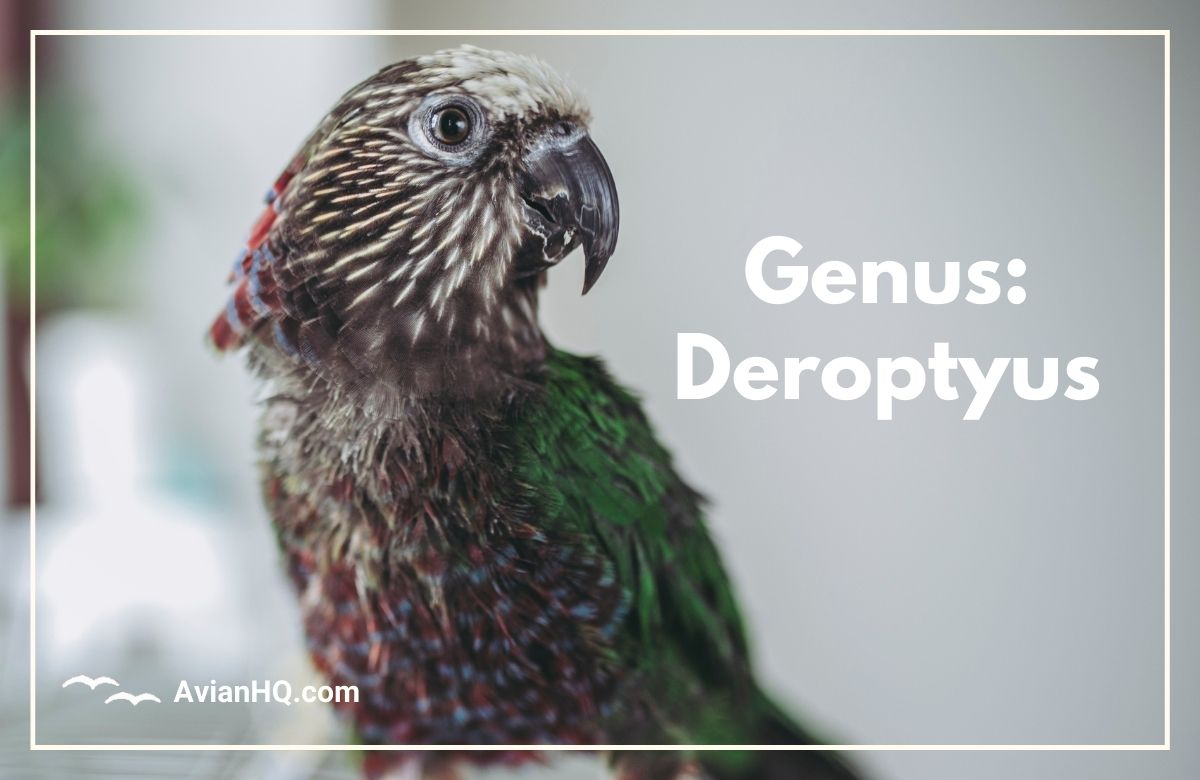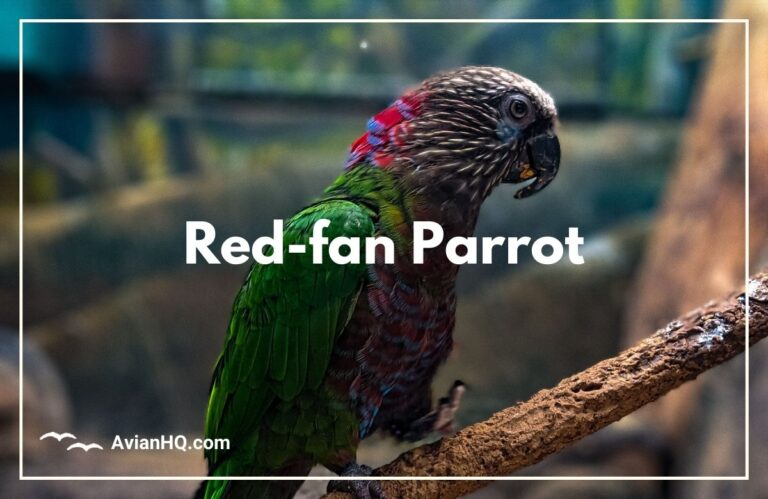Genus: Deroptyus
Have you ever seen a flash of vibrant red take flight in the rainforests of South America? If so, you may have spotted a Deroptyus parrot! This genus of parrots stands out for their beautiful bright red wing patches and high levels of intelligence.
As you read on, you’ll uncover captivating details about these charismatic birds. You’ll learn:
- Species Spotlights – What makes the red-fan parrot unique
- Behaviors – How Deroptyus parrots socialize and use tools
- Cultural Importance – The significance of these parrots to indigenous groups
- Conservation – The threats they face and efforts to protect them
So prepare to have your mind dazzled by this dazzling genus of parrots! Some key things that make them shine:
- Striking red, blue, and green plumage
- Highly social and vocal nature
- Impressive problem-solving abilities
- Importance in folklore and aviculture
- Vulnerability to deforestation and poaching
Learning about species like Deroptyus reminds us of nature’s incredible diversity. It also highlights why we must protect rare birds and rainforests.
Let’s dive in and uncover more about these intelligent and colorful parrots! First up is a spotlight on the red-fan parrot species.
Species Spotlights
Red-fan Parrot (Deroptyus accipitrinus)
The Deroptyus genus contains one specie – the red-fan parrot (Deroptyus accipitrinus). This medium-sized parrot grows to 30-36 cm (12-14 in) long and weighs 140-230 g (5-8 oz). Let’s spotlight what makes this species stand out:
- Colorful Plumage – Bright red wing patches contrast with blue, green, and yellow feathers. The red “fans” on its wings gave rise to its common name when they spread in flight.
- Tropical Range – Found in lowland rainforests of northern South America. Countries like Venezuela, the Guianas, Brazil and Peru serve as its habitat.
- Diet – An omnivorous species that feeds on fruits, seeds, berries, blossoms, and sometimes insects or larvae.
- Aviculture Popularity – Highly desired and expensive as pet birds due to stunning looks, intelligence and talking ability.
- Conservation Status – Habitat loss and trapping for the pet trade has led the IUCN Red List to classify the red-fan parrot as Near Threatened.
The red-fan parrot surely spreads its colorful wings over South America’s rainforests. But appreciation for its beauty may ironically contribute to its decline. Maintaining its forest habitat and limiting poaching remain key to preserving the species.
Behavior and Intelligence
The Deroptyus genus exhibits some of the most fascinating behaviors and intelligence in the parrot world. When it comes to smarts, red-fan parrots rank near the top among all parrot species.
Social Structure
- Form large flocks of 10 to 30 individuals
- Loud vocalizations facilitate communication
- Coordinate movements and activities as a group
- May socialize with other parrot species in wild
Intelligence and Enrichment
- Excellent problem-solving skills
- Use tools in captivity and wild to get food
- Require lots of mental stimulation and puzzle toys
Communication Abilities
- Advanced language mimicry skills
- Ability to learn numerous words and phrases
- Captive red-fan parrots understood to have vocabularies of 100+ words
Protecting forest habitats can help conserve the natural behaviors of these intelligent parrots. Providing proper enrichment is also key for any captive Deroptyus parrots. Their high intellect demands it!
Cultural Significance
The vibrant colors and vocal nature of Deroptyus parrots have made them more than just forest-dwellers. They also hold a valuable place in human culture.
Folklore and Art
- Featured in legends and artwork of indigenous Amazonian groups
- Symbolize attributes like intelligence, communication, and sociability
- Bright plumage inspires decorative motifs and textile patterns
Aviculture Appeal
- Highly coveted as pet birds around the world due to stunning looks
- Willingness to mimic speech increases desirability
- High market value – often illegally imported and sold for over $1000
Conservation Ambassador
- Scarlet plumage and threatened status garner attention
- Seen as representative of endangered South American species
- Can serve as “flagship” species for raising conservation awareness
The cultural significance of Deroptyus allows them to transcend ecology. Their beauty and intellect have made them symbols in art and folklore, status symbols as pets, and eye-catching ambassadors for conservation. Preserving them benefits both environmental and cultural realms.
Threats and Conservation
For all their appeal, Deroptyus parrots face real threats in the wild. Habitat loss and trapping for the illegal pet trade pose the most significant risks.
Deforestation
- Logging and land clearing reducing available nesting and feeding habitat
- Estimated 30-50% of forest lost in some parts of species range
- Puts pressure on wild populations by diminishing resources
Wildlife Trafficking
- Smuggling of trapped birds common due to high market value
- Poaching reduces number of breeding adults long-term
- Trauma and overcrowding often high during transport
Conservation Actions
- Habitat preservation via protected areas and reforestation
- Community monitoring and patrols to prevent poaching
- Rescue/rehabilitation of confiscated birds
- Captive breeding pairs aid reintroduction
Deroptyus parrots’ future depends on preserving rainforest homes and protecting flocks from illegal wildlife trade. With care and effort, their flashy red wings can continue gracing South America’s forests for decades to come.
Conclusion
The genus Deroptyus contains some of the most stunning and intelligent parrots on Earth. Their scarlet plumage and impressive intellect make them stand out in the forests of South America. Unfortunately, these traits also make them targets for habitat destruction and the illegal pet trade.
Conservationists have recognized Deroptyus parrots as threatened, installing protections in some areas. But much work remains to preserve populations being depleted by deforestation and trapping. Their ability to survive depends on maintaining mature rainforest habitat and preventing poaching.
Beyond ecology, these parrots hold cultural significance too. Indigenous groups see them as symbols of communication and wisdom. Collectors and aviculturalists admire them for their vocal capabilities and striking beauty. They even serve as ambassadors to raise awareness about the plight of South American species.
So in many ways, the existence of these remarkable red-winged parrots helps support the welfare of ecosystems, local cultures, and global biodiversity. Ensuring thriving and secure populations of species like the Deroptyus genus remains imperative for us all. Their brightly hued feathers remind us how conservation allows diverse lifeforms and human societies to mutually flourish.


